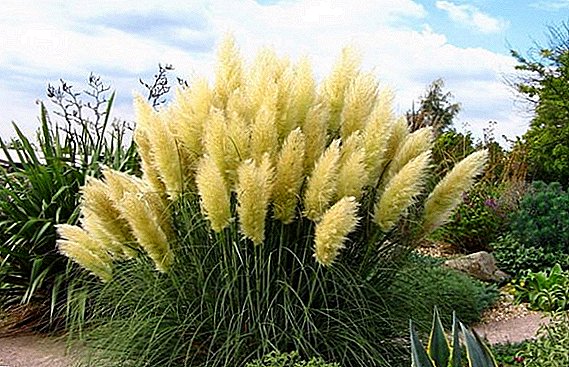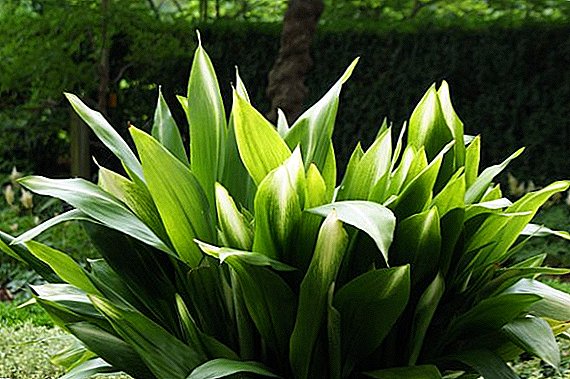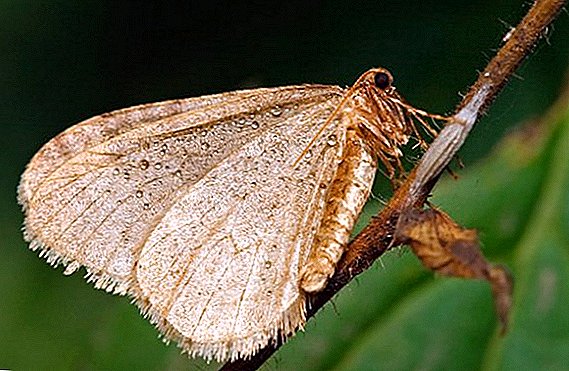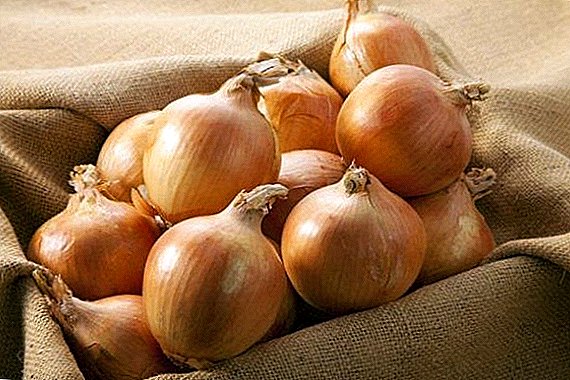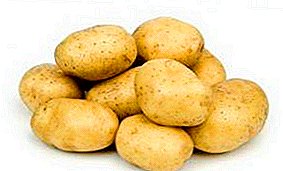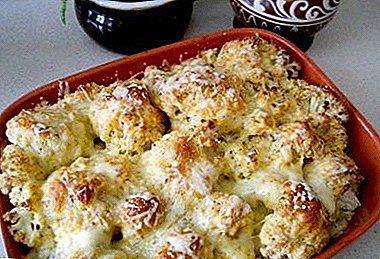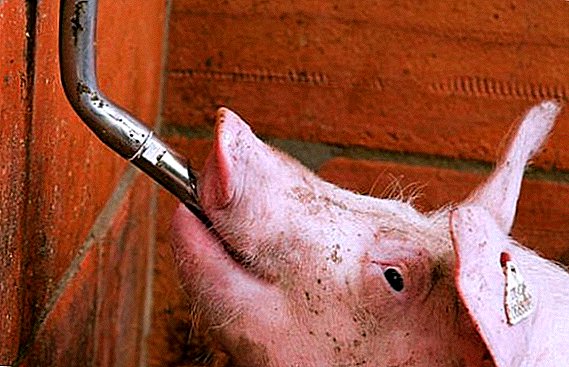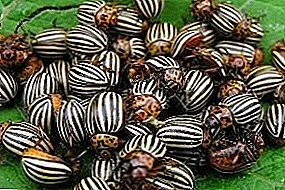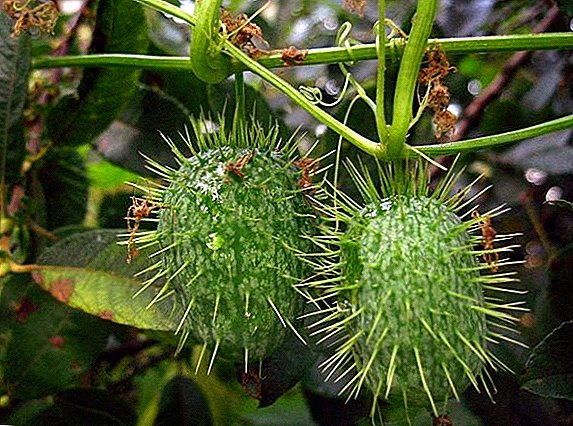 Echinocystis - a curious plant, some people perceive it as a weed, throwing all its strength against it, while others grow it purposefully, for decorative purposes.
Echinocystis - a curious plant, some people perceive it as a weed, throwing all its strength against it, while others grow it purposefully, for decorative purposes.
A stranger who arrived in our region from Eastern Canada and America successfully mastered our territories and earned a lot of names, the most common of which are prickly fruit, bladder blackberry, spiny cucumber, shooting ivy and others.
Description
The one-year plant represents the genus Echinocystis in a single genus; Pumpkin family. The plant got its name by adding two Latin words: "echinos" - hedgehog, "cystis" - bubble or ball.
Pumpkin, watermelon, cucumber and melon, as well as Echinocystis, belong to the Pumpkin family, which are widely distributed on the earth's surface, with the exception of all cold countries.

Echinocystis is essentially fast growing liana which can reach the 8-10-meter mark. Root - superficial, structure - fibrous. Kolyucheplodnik equally well grows in length and sideways. This feature is used in landscape design to disguise unsightly places, because if there is no vertical support next to it, on which he must climb, he begins to braid everything around him.
Did you know? Under favorable climatic conditions, the daily growth rate of echinocystis is 15 cm.Stems thin, attached to the support with the help of spiral antennae. Light green leaves 5–15 cm in size have a smooth surface, dissected into 5 lobes. All parts of the sheet have a triangular shape with a sharp tip, with a jagged edge.

Gherkin - this monoecious plant in which there are different sexes, small and not very interesting in appearance. Male flowers are small, collected in the inflorescences in the form of a candle. Female flowers are single, larger in size, lower in height than male ones, in the axils of the leaves. Echinocystis is pollinated by insects and wind (a light breeze is enough to pollen from male flowers to fly to female flowers). Depending on the region, flowering begins from the end of May to September.
Monoecious - plants in which male and female same-sex flowers are on the same plant. In addition to echinocystis, monoecious ones also include: birch, walnut, oak, maize, hazelnut and alder.The fruits begin to ripen from early August to October. The fruit of the plant is quite funny shape - something like a rolled-up hedgehog: an oval bubble up to 5 cm long, up to 3 cm wide, covered with rare thin spikes, rather soft to the touch. Initially, the fruit has a bluish-green color, which eventually turns yellow, dries out and throws seeds through the holes formed. There are two seeds in each fruit.
Did you know? A pleasant honey aroma comes from male inflorescences; it is they who attract bees to collect pollen.

Planting and growing
How funny it would not have been, but Echinocysts may appear on your site without your intervention. It is enough that this culture appears within a radius of 5-10 km, and you can give it to animals, birds or travelers can bring prickly pear seed on their boots.
When the earth warms up in the spring, a sprout consisting of two cotyledons on a thickened stem is selected. After two or three days, the stem is pulled out and begins to cling to the support with its thin mustache.
Breeding
Breeding thorny seeds. In late autumn, before the winter, two seeds are sown in the wells located at a distance of 80-100 cm from each other. Seeds can not drip, enough to deepen, stepping on them. In the spring, if necessary, should be thinned out. 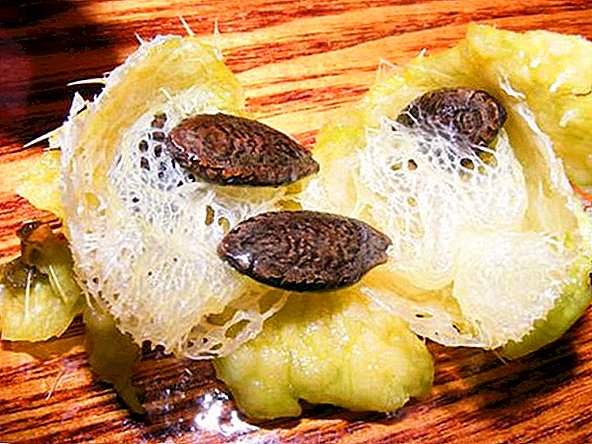
Well, if you, willy-nilly, have already acquired this culture, then you need to know that since the seed-boxes do not ripen amicably and most often the plant reproduces itself, in spring it is necessary to remove all excess shoots.
Important! The speed with which Echinocystis shoots its seeds is 11 m per second, and the radius of fire is 8 m.
Care
Absolutely unpretentious plant. Loves loose wet land. He needs top dressing only on salt marshes, growing on black soil, does not need additional top dressing. Prickly cucumber as such does not require care, except that only in the dry summer - in the form of additional watering. 
Diseases and pests
It was not observed that echinocystis was exposed to diseases or of interest to pests.
Possible difficulties
The plant does not tolerate acidic soils and shaded places: the stem is drawn out, the mass of leaves are poorly formed, does not bloom.
Important! Care should be taken in places dominated by Echinocystis during the flowering period. It is observed that prolonged contact with this flowering plant.

Application in landscape design
In landscape design, the plant is used not so long ago, showing amazing results in vertical gardening. In one and a half or two months, Echinocystis is able to create a beautiful hedge, to decorate the necessary places, to create a green vertical wall.
In the event that there are no necessary supports, and the plant is very like it, it can be used as a soil cover, one plant can capture up to 8 square meters. meters of land.
Prickly cucumber fell in love with many beekeepers, as it is a good honey plant. Honey from it, though not different color, but very fragrant and pleasant to taste.


